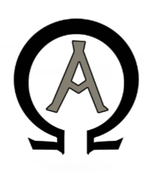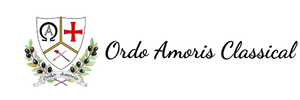Core Distinctives

Core Distinctive #1: Christian
Ordo Amoris Classical Statement of Faith
What does Ordo Amoris Classical Believe? Ordo Amoris Classical Board Members lead the school from a sense of wonder. We are amazed by God’s saving kindness to us, and by his glory that we see in all of life. All Staff and Board Members are required to affirm this view of life that is:
First, we are Awe Inspired. We are amazed at God’s glory and goodness.
Second, we are Historic Christians. We honor the Apostles’ and Nicene Creeds as originally given to the church.
Third, we are Broadly Ecumenical. We avoid partisan divisions, yet we embrace the basic theology of evangelical Christianity.
Ordo Amoris Classical Statement of Faith
What does Ordo Amoris Classical Believe? Ordo Amoris Classical Board Members lead the school from a sense of wonder. We are amazed by God’s saving kindness to us, and by his glory that we see in all of life. All Staff and Board Members are required to affirm this view of life that is:
- Awe Inspired
- Historically Christian
- Broadly Ecumenical
First, we are Awe Inspired. We are amazed at God’s glory and goodness.
- We believe that God is sovereign over all of life and his glory is clearly seen in all subjects of study.
- We believe that God is gracious to us. By faith, we trust that he delights in us as his adopted children through the substitutionary work of Christ on the cross.
- We believe that God commands us to share this wonder with all the nations in words and deeds. His gracious providence propels us to offer our lives for others.
Second, we are Historic Christians. We honor the Apostles’ and Nicene Creeds as originally given to the church.
- We believe that there is one God, eternally existent in three persons: Father, Son and Holy Spirit.
- We believe in the true deity and full humanity of our Lord Jesus Christ, in His virgin birth, in His sinless life, in His miracles, in His vicarious and atoning death through His shed blood, in His bodily resurrection, in His ascension to the right hand of the Father, and in His personal return in power and glory.
Third, we are Broadly Ecumenical. We avoid partisan divisions, yet we embrace the basic theology of evangelical Christianity.
- We believe the Bible to be the inspired, the only infallible, authoritative Word of God.
- We believe that God wonderfully and immutably creates each person as male or female, and that these distinct, complementary sexes together reflect the image and nature of God.
- We believe that God instituted human marriage between one man and one woman to meet our need for companionship, to create new life, to provide the basis for a stable human society, and to reflect God’s covenantal relationship with His people.
- We believe that through Adam’s sin all fell, inherited a sinful nature, and became alienated from God, so that every faculty of our humanity is corrupted by sin.
- We believe that God offers redemption and restoration to all who confess and forsake their sin, seeking His mercy and forgiveness through Jesus Christ. (Acts 3:19-21; Rom 10:9-10; 1 Cor 6:9-11.)

Core Distinctive #2: Classical Education
A classical approach to education teaches your children how to learn, giving them the tools necessary to tackle any new environment with great success.
So what is classical education? How is it different than typical modern educational methods?
Classical education was the predominant educational model in the Western World from antiquity through the 19th Century, when modern education slowly began to supplant it.
The goal of classical education is to teach students how to learn, rather than how to attain a given level of competency in so many individual and disjoint subjects, most of which will be forgotten in time.
“The question is not—how much does the youth know when he has finished his education—but how much does he care? and about how many orders of things does he care? In fact, how large is the room in which he finds his feet set? and, therefore, how full is the life he has before him?” School Education, pp. 170-171
Classical education takes a different approach to subject matter. In classical education, subjects are viewed as the raw materials which the student will use to develop his or her mind. Furthermore, subjects are horizontally integrated with one another. So, for example, explicit connections between history and science and literature are maintained.
Classical education seeks to develop the mind, heart, and character of the student by teaching students to recognize and appreciate the good, the beautiful, and the true. This is consistent with Paul’s admonition to the church in Philippians 4:8.
The program of study of classical education arises from and is entrained to the natural developmental patterns of children. Early education emphasizes memorization and the accumulation of facts, the middle years emphasize logic, ethics and debate, and later years emphasize the creation and delivery of mature, coherent ideas in spoken and written speech. For more about the basics of classical education, see Dorothy Sayers’ essay “The Lost Tools of Learning.”
Modern education, on the other hand, makes little attempt to integrate across subject matter. Math is simply math, and has no bearing on logic, history or literature, for example. Similarly, self-expression is emphasized too soon in modern education (ostensibly to develop a student’s self-esteem and to foster creativity), to the detriment of the development of the mental faculties that will truly enable a student to express himself or herself. Books and studies from both secular and Christian authors repeatedly demonstrate the diminishing marginal returns of modern American education.
A classical approach to education teaches your children how to learn, giving them the tools necessary to tackle any new environment with great success.
So what is classical education? How is it different than typical modern educational methods?
Classical education was the predominant educational model in the Western World from antiquity through the 19th Century, when modern education slowly began to supplant it.
The goal of classical education is to teach students how to learn, rather than how to attain a given level of competency in so many individual and disjoint subjects, most of which will be forgotten in time.
“The question is not—how much does the youth know when he has finished his education—but how much does he care? and about how many orders of things does he care? In fact, how large is the room in which he finds his feet set? and, therefore, how full is the life he has before him?” School Education, pp. 170-171
Classical education takes a different approach to subject matter. In classical education, subjects are viewed as the raw materials which the student will use to develop his or her mind. Furthermore, subjects are horizontally integrated with one another. So, for example, explicit connections between history and science and literature are maintained.
Classical education seeks to develop the mind, heart, and character of the student by teaching students to recognize and appreciate the good, the beautiful, and the true. This is consistent with Paul’s admonition to the church in Philippians 4:8.
The program of study of classical education arises from and is entrained to the natural developmental patterns of children. Early education emphasizes memorization and the accumulation of facts, the middle years emphasize logic, ethics and debate, and later years emphasize the creation and delivery of mature, coherent ideas in spoken and written speech. For more about the basics of classical education, see Dorothy Sayers’ essay “The Lost Tools of Learning.”
Modern education, on the other hand, makes little attempt to integrate across subject matter. Math is simply math, and has no bearing on logic, history or literature, for example. Similarly, self-expression is emphasized too soon in modern education (ostensibly to develop a student’s self-esteem and to foster creativity), to the detriment of the development of the mental faculties that will truly enable a student to express himself or herself. Books and studies from both secular and Christian authors repeatedly demonstrate the diminishing marginal returns of modern American education.

Core Distinctive #3: The Collaborative Model
Our students are prepared for the rigors of adult life with our alternative schedule: half homeschool, half traditional school.
The collaborative model of education is known by several names, including blended, university model, homeschool hybrid, and cottage school.
Collaborative education means that the student’s instructional time is divided between classroom and home. In collaborative education, classroom instruction occurs 2 or 3 days per week and is led by a professional educator. On non-class days, the student remains at home to complete other subject work under the guidance and instruction of his or her parent. The parent (co-teacher) and classroom instructor work in tandem to train up a child in the way they should go.
Benefits for Families
Collaborative education is consistent with the biblical mandate for parents to retain the primary responsibility for the education and training of their children. The scientific community is beginning to recognize the importance of a sustained parent-child bond in the healthy development of the child—a bond which is prematurely eroded in a full-time school environment. Closely related to the parent-child bond, collaborative education also allows for vertical relationships among siblings to be maintained. Full-time school often results in each child developing friends exclusively within his or her own grade, resulting in a breakdown of natural friendships among siblings. Collaborative education provides families with consistent access to educators with both disciplinary and classical credentials. With collaborative education, parents also remain the primary role-models for the child, and maintain primary responsibility for discipleship and character development. This family oriented schedule provides flexibility for field trips, service-based learning, etc. Another major benefit is that classes are offered a la carte based on proficiency level rather than grade level. If a student has a proficiency in a particular subject, they are encouraged to enroll in classes at their individual level.
(Adapted from Providence Preparatory School)
Our students are prepared for the rigors of adult life with our alternative schedule: half homeschool, half traditional school.
The collaborative model of education is known by several names, including blended, university model, homeschool hybrid, and cottage school.
Collaborative education means that the student’s instructional time is divided between classroom and home. In collaborative education, classroom instruction occurs 2 or 3 days per week and is led by a professional educator. On non-class days, the student remains at home to complete other subject work under the guidance and instruction of his or her parent. The parent (co-teacher) and classroom instructor work in tandem to train up a child in the way they should go.
Benefits for Families
Collaborative education is consistent with the biblical mandate for parents to retain the primary responsibility for the education and training of their children. The scientific community is beginning to recognize the importance of a sustained parent-child bond in the healthy development of the child—a bond which is prematurely eroded in a full-time school environment. Closely related to the parent-child bond, collaborative education also allows for vertical relationships among siblings to be maintained. Full-time school often results in each child developing friends exclusively within his or her own grade, resulting in a breakdown of natural friendships among siblings. Collaborative education provides families with consistent access to educators with both disciplinary and classical credentials. With collaborative education, parents also remain the primary role-models for the child, and maintain primary responsibility for discipleship and character development. This family oriented schedule provides flexibility for field trips, service-based learning, etc. Another major benefit is that classes are offered a la carte based on proficiency level rather than grade level. If a student has a proficiency in a particular subject, they are encouraged to enroll in classes at their individual level.
(Adapted from Providence Preparatory School)

